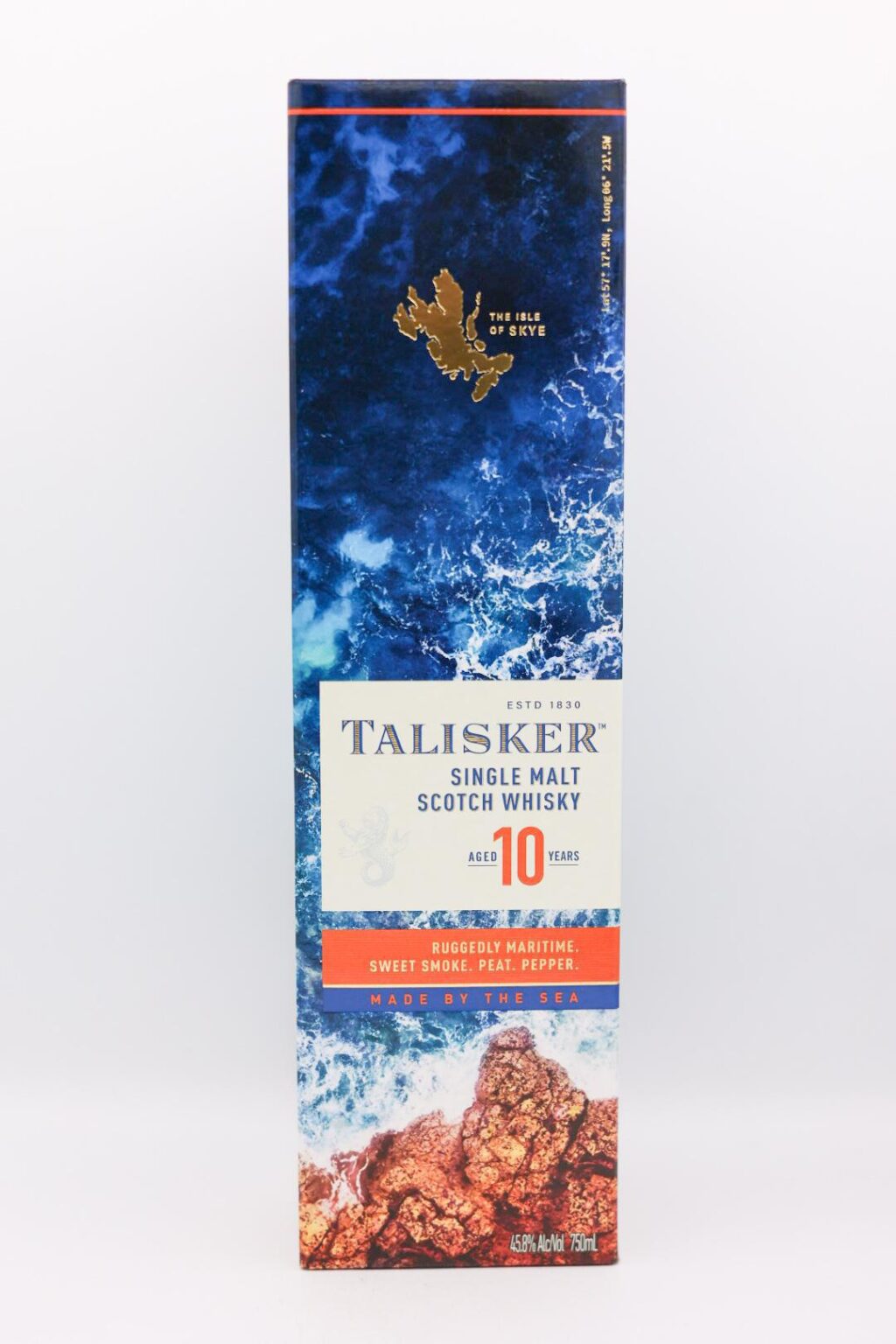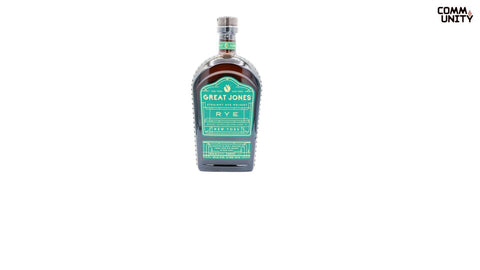Many people get confused about the difference between Scotch vs Whiskey. However, it's not too complicated when you think of Whiskey as the big family tree, and Scotch as just one branch on it.
Here's the thing nobody tells you upfront about scotch or whiskey. Every Scotch is considered a whiskey, but Whiskey isn't always Scotch. Sounds weird, right? But it makes perfect sense when you dig deeper. Did you also know that the spelling “whisky” is always used to refer to Scotch, but in Japan they still use the spelling “Whiskey?”
“Whiskey,” again, could refer to all types of whiskey, including or excluding Scotch.

Talisker Single Malt Scotch 10 Year Old Whisky
The Geography Game Changes Everything
Scotch must come from Scotland. There’s no exceptions, no shortcuts and no loopholes. The Scots don't mess around with their national treasure. They've got strict rules about it.
In Scotland, five regions make Scotch. Each one tastes different because of the difference in weather, water, and local traditions. While Speyside makes elegant stuff, the Highlands cover everything from light to heavy, and lowlands keep things gentle and smooth. The others include Islay that loves peat smoke and Campbeltown that offers character to the Scotch.
Other whiskeys come from everywhere else. America makes bourbon and rye. Ireland typically uses a triple distillation for smoothness. Canada blends different grains creatively. Japan follows Scottish methods but adds their own twist.
Rules That Matter
Scottish Law Gets Serious
Scotland doesn't joke about scotch production. You need specific ingredients only. Water, malted barley, and maybe other grains. No artificial flavors, no shortcuts, and no compromises, ever.
Copper stills are traditional. Most distilleries use pot stills for single malts. Some use column stills for grain whisky. The still shape affects taste more than most people realize.
Aging happens in used oak barrels exclusively. Never new oak (or virgin oak) like bourbon requires. This creates subtler flavors over longer periods. Three years minimum aging, though most are aged for much longer.
American Rules - They’re Different
Bourbon needs a minimum of 51% corn. Also, new charred oak barrels are mandatory. This gives bourbon those vanilla and caramel notes that everyone recognizes. While there’s no minimum aging for regular bourbon, "straight" bourbon needs two years.
Tennessee whiskey adds charcoal filtering before aging. Rye whiskey emphasizes spicy grains instead of corn. Each type follows different rules completely.
How They're Actually Made
Scottish Methods Stay Traditional
Malting starts everything. Barley soaks in water, then dries with heat. Sometimes peat smoke adds flavor during drying. This creates the base for fermentation.
Fermentation takes place in wooden or steel tanks. Wild yeasts are sometimes used in commercial operations. Temperature control is of utmost importance, as very hot temperature kills flavor compounds and very cold ones slow everything down.
Double distillation is standard. The first distillation makes "low wines" that contain about 20% alcohol, the second distillation creates "new make spirit" at 70% alcohol. Some regions do triple distillation instead.
American Production Moves Faster
Column stills dominate American production. These work continuously, unlike Scottish pot stills. Higher efficiency, consistent quality, lower costs. Some premium brands still use pot stills though.
Sour mash techniques recycle previous fermentation leftovers. This maintains consistency batch to batch and pH levels stay steady. Flavors develop predictably.
Aging Makes The Difference
Climate Changes Everything
Scotland's cool weather slows aging. Humidity stays high year-round. Whisky barely evaporates compared to warmer places. Twenty-year aging becomes possible without losing too much liquid.
American climates accelerate aging. Hot summers expand barrels, while cold winters contract them. Whiskey moves in and out of wood constantly, and more wood contact results in faster flavor development.
Barrel Types Create Flavors
Used barrels give Scotch subtlety with previous bourbon or sherry already soaked into the wood. Gentle extraction happens over decades. Be it scotch or whiskey, complex layers build slowly.
New oak hits bourbon hard. Vanilla, caramel, and spice compounds extract quickly. Char levels affect extraction rates, meaning that heavy char creates more flavor faster.
Taste Profiles Tell Stories
Scottish Regional Characters
Speyside whiskies taste elegant. Fruit notes dominate. Apple, pear, and honey flavors are common. Complexity builds with age beautifully.
Highland expressions vary wildly. Light and grassy in some areas. Rich and sherried in others. Mountain waters affect everything.
Islay brings the smoke. Peat fires dry the barley. Seaweed and maritime flavors add complexity. Generally not for beginners.
American Boldness Shines
Bourbon tastes sweet and rich. Corn provides natural sweetness. New oak adds vanilla and spice. Higher proof delivers more intensity.
Rye whiskey brings spice. Pepper notes dominate the palate. Less sweetness than bourbon. Food pairing opportunities differ completely.
Classifications Get Complicated
Scottish Categories
Single malt means one distillery, malted barley only. These get the most attention from enthusiasts. Each distillery adds their unique character to the resulting malt.
Blended scotch is a mix of everything. Single malts blend with grain whiskies. Master blenders create consistent flavors. Most Scotch sold worldwide is blended.
American Simplicity
Straight whiskey must be aged at least two years and no artificial flavoring allowed. Single barrel means one barrel only. Small batch combines selected barrels.
Bottled-in-bond follows 1897 laws. One distillery, one season, four years minimum aging. Precisely 50% alcohol content. Government supervision is required.
Price Points Vary Dramatically
Scottish single malts generally cost more. Longer aging periods increase costs. Lower yields from pot stills. Limited production capabilities.
American whiskeys offer value. Efficient production keeps costs down. Younger aging requirements help. Column stills produce more volume.
Premium expressions compete directly. High-end American whiskeys match expensive Scotch prices. Limited releases create collector markets.
Serving Suggestions Matter
Neat tasting reveals true character. Room temperature works best usually. Small amounts of water open up flavors. Ice changes everything dramatically.
Glassware affects the experience. Tulip-shaped glasses concentrate aromas, while wide glasses dissipate smells too quickly. Professional tasters use specific glass types.
Food pairings enhance it all. Light Scotch works with seafood, while heavy Islay matches smoked meats and bourbon pairs naturally well with barbecue.
Final Thoughts
Now that you know what scotch vs whiskey means, scotch represents whiskey's most regulated category. Scottish traditions and climate create unique characteristics. American whiskeys showcase different approaches entirely.
Understanding these differences helps everyone. Whether you prefer subtle complexity or bold flavors, each category offers something special. Personal taste ultimately decides everything.
Quality exists in both scotch and whiskey blends. Premium expressions reward careful tasting. Price doesn't always indicate quality though, which is why cheaper options don’t do justice to the real taste.
Start with respected brands. Ask knowledgeable retailers for recommendations. Taste different styles systematically. The whiskey world offers endless exploration opportunities. Scotch provides traditional elegance. American whiskeys bring innovation and boldness. Nonetheless, both spirits deserve respect and attention.
Buy the finest scotch and whiskey bottles from the popular store, Community Wine & Spirits, and taste authenticity regardless of what you pick.

